Reisebericht & Travelguide: Togian Islands – Der schönste Fleck Erde
English version below ↓
Vor einigen Jahren haben wir die Togian Islands in Sulawesi, Indonesien besucht. Etliche Reisen und beeindruckende Landschaften später, ist diese Inselgruppe immer noch der schönste Fleck der Welt für mich. Deswegen erfahrt ihr in diesem Travelguide alle Tipps und Indormationen, die ich über die Togian Islands habe.
Was & Wo: Das sind die Togian Islands
Die wenigsten werden von Sulawesi (früher: Celebes) gehört haben. Noch weniger von den Togian Islands. Sulawesi liegt nördlich von Bali und östlich von Borneo. Seht ihr diesen Fleck auf der Landkarte, den viele mit einer Orchidee vergleichen? Dieser Fleck hat eine Nord-Süd-Ausdehnung von der Größe Deutschlands. Und trotzdem kennt ihn keiner. Das ist Sulawesi.
Am oberen Teil der Orchidee, zwischen den oberen „Armen“, da findet sich nicht nur der Äquator, sondern auch die Togian Islands. 56 Inseln bilden die Gruppe, aber nicht alle sind bewohnt. Und manchmal ist nur das Wasser bewohnt, doch dazu später mehr.
Seit 2004 stehen die Togians und ihre Unterwasserwelt unter Naturschutz. Davor wurde gerne mit Dynamit gefischt, was viele Korallen zerstört hat, die sich jedoch langsam erholen. Dieses Umdenken ist untypisch für Indonesien und machen die Togian Islands aber noch viel reizvoller. Angeblich war es eine deutsche Auswanderin, die sich dem Naturschutz gewidmet und die Bevölkerung aufgeklärt hat. Wem auch immer dieser Schritt zu verdanken ist: Die einzigartige Natur kann etwas aufatmen und die Einheimischen profitieren von den begeisterten Touristen. Die sich zum Glück aber noch in Grenzen halten, denn die Anreise ist kein Spaziergang.
Anfahrt: So erreicht ihr das Naturschutzgebiet
Vorab: Anscheinend gibt es seit 2018 eine Eintrittsgebühr für das Betreten des Naturschutzgebiets von ca. 10€ für Erwachsene und etwas weniger für Studenten und Einheimische. (Quelle: Indojunkie). Nehmt euch einen Batzen Bargeld mit, denn nach meinem Kenntnisstand gibt es keinen ATM auf den Inseln. Ein ausreichender Vorrat ist daher ein Muss.
Die Togian Islands könnt ihr entweder vom Norden aus von Gorontalo oder vom Süden von Ampana erreichen. Aus dem Süden dauert die Überfahrt nur ein paar Stunden (3-4h, wenn ich mich richtig erinnere), dafür habt ihr einen wesentlich längeren Landweg vor euch. Anscheinend gibt es aber auch mittlerweile einen Flughafen in Ampana.
Wir sind von Gorontalo aus angereist. Von Manado aus haben wir ein Private Car nach Gorontalo genommen, eine Nacht in dieser Stadt verbracht und sind dann auf die Fähre in Richtung Togians gestiegen. Erkundigt euch frühzeitig, wann Fähren fahren, die Verbindung wird nicht jeden Tag bedient (nach meinem Wissensstand). Die Fähre vom Norden ist wesentlich größer als die von Ampana, denn man fährt die ganze Nacht über. So könnt ihr euch auch für verschiedene Klassen entscheiden. Wir hatten bequeme Stühle unter Deck (2. Klasse), die man weit nach hinten stellen konnte.
Doch eigentlich hätte es auch die günstigste Klasse gemacht, denn es dauerte nicht lange, bis wir auf andere Traveller stießen und ein großes Matratzenlager an Deck eröffneten.
Sollte das Wetter mitspielen und ihr nicht seekrank werden, dann kann ich wirklich jedem nur empfehlen an Deck zu schlafen. Der Sternenhimmel auf dem offenen Meer ist atemberaubend und ich habe nie wieder einen solch magischen Himmel gesehen. Nicht mal in Wae Rebo. Es war so schön, dass ich eigentlich nicht schlafen wollte, aber die Müdigkeit siegte irgendwann. Da stört auch der Dieselgeruch, der ab und zu übers Deck weht, nicht mehr sonderlich. Geweckt wurden wir von den ersten Sonnenstrahlen und in Begleitung von Delfinen. Kann mich jemand mal kneifen?
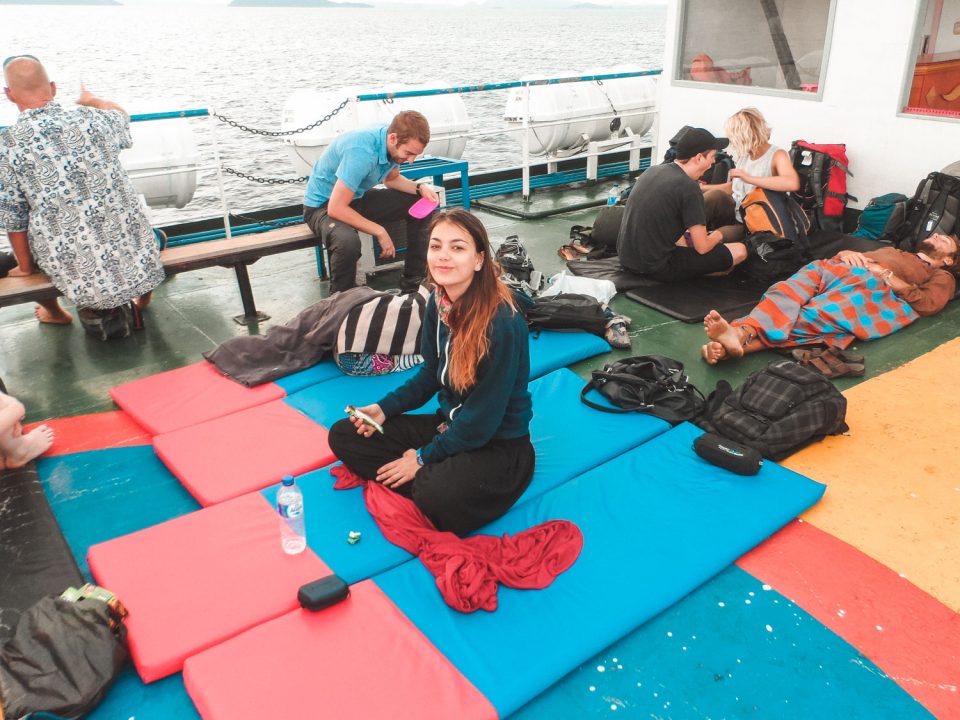
Reisen zwischen den Inseln
Die Fähren legen beide in der Hauptstadt Wakai an. Wer sich jetzt eine richtige Stadt vorstellt, liegt komplett falsch. Es ist vielmehr ein Dorf mit flachen Hütten vor denen Nelken getrocknet werden. Autos und Motorräder gibt es auf der ganzen Insel kaum, wenn dann finden sich hier ein paar. Zum Weiterreisen müsst ihr mit den Einheimischen fahren. Das ist aber kein Problem, die Bootsbesitzer warten schon am Pier auf die Ankömmlinge. Eventuell könnt ihr euch auch schon auf der Fähre mit anderen Travellern zusammentun und so die Kosten für die Bootsfahrt sparen. Wir haben uns für eine A-zyklische Route entschieden (die offen gestanden auch nicht die schlauste war) und deswegen ein Boot für uns alleine gechartert. Wenn ihr jemanden gefunden habt, dann heißt es kräftig verhandeln. Der Preis variiert nach Entfernung und wie viel Andrang es gerade gibt. Wo hier der richtige Preis liegt, ist Gefühlssache.
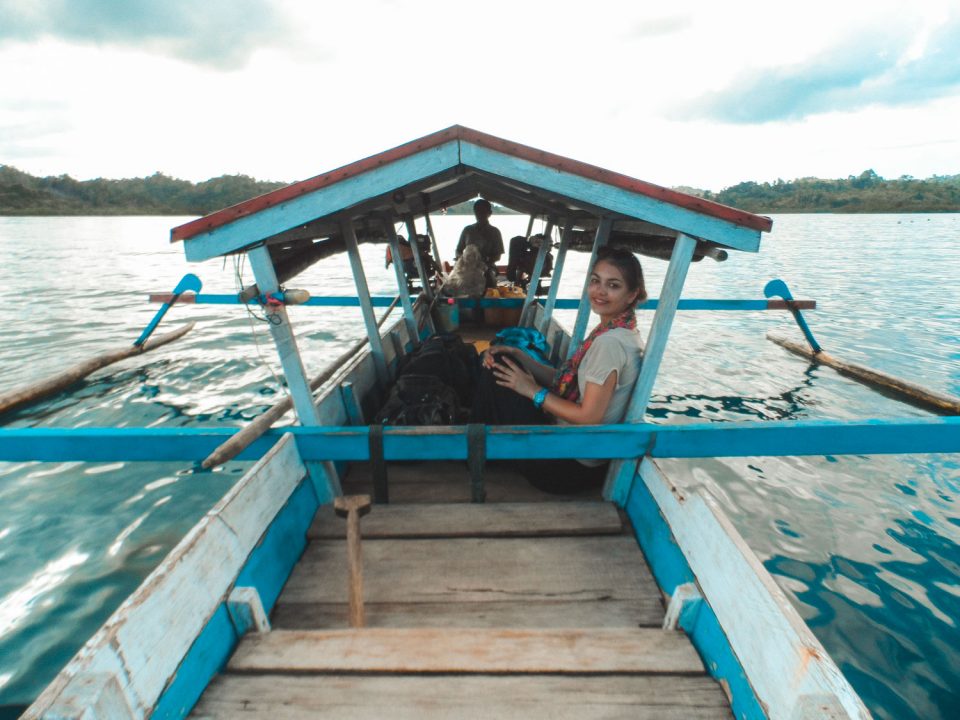
Das Leben der Togians
Die Menschen auf den Togian Islands sind wie in ganz Sulawesi überaus freundlich und zuvorkommend. Die meisten von ihnen sind muslimisch und es kann schon mal sein, dass euch der Muezzin aus dem Bett jodelt. Das ist zwar am Anfang nervig, aber danach kann man sich zum Glück ja auch wieder umdrehen. Oder den Sonnenaufgang betrachten.
Außerdem gibt es noch das Seenomanden-Volk der Bajos. Dieses Volk lebt wahrscheinlich schon viel länger auf den Togians und befindet sich gerade in einem Zwischenstadium von Seenomaden zu sesshaften Einwohnern. Denn eigentlich glauben die Bajos, dass auf dem Land nur die Toten wohnen und gehen deswegen nur zum Fürchte sammeln, Holz fällen und für Beerdigungen an Land. Das restliche Leben spielt sich in Stelzenhütten und auf Booten ab. Zumindest hat es das mal. Zwar sieht man überall die typischen Stelzenhäuser, doch die Dörfer erstrecken sich dann auch schon weiter aufs Festland. Wo meistens eine Moschee steht. Hier vermischt sich uralter Glaube mit anderen Religionen.
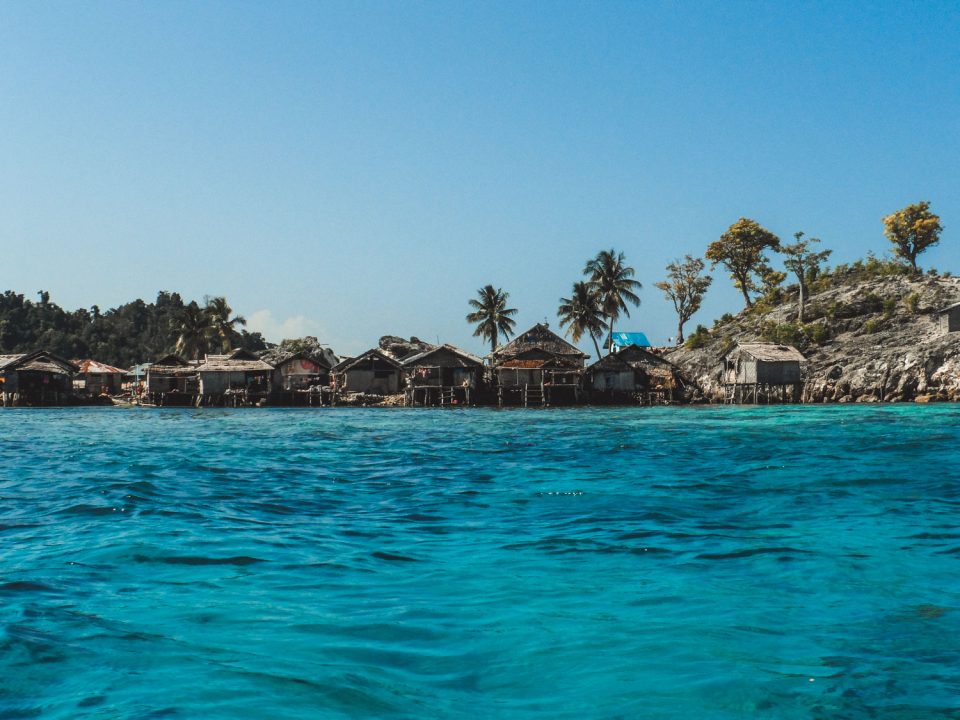
Unterkünfte & Preise
Luxusherbergen findet man hier nicht oder kaum, was auch daran liegt, dass die meisten Inseln weder durchgängig Strom haben, noch Internet oder Handyempfang. Und das ist großartig! Nirgendwo sonst kann man so unglaublich gut abschalten und in den Tag rein leben. Aber dazu auch später mehr. Die meisten Unterkünfte befinden sich dementsprechend in der unteren bis mittleren Kategorie und sind mit dem Nötigsten ausgestattet. Die Preise inkludieren meistens auch 3 Mahlzeiten am Tag. Da es keine Supermärkte gibt, wird das Essen am Tag frisch gefangen. Gegessen wird dann gemeinsam und meist zur gleichen Uhrzeit. A la Card habe ich bei keiner Unterkunft erlebt. Das bringt dich aber auch mit den restlichen Bewohnern zusammen und man fühlt sich wie in einer großen Familie.
Poya Lisa
Poya Lisa ist eine sehr winzige Insel gegenüber von Bomba und für mich der schönste Ort.
Der Besitzer der Insel hat sie einem Bajo abgekauft, nachdem er als junger Mann immer mit dem Boot auf die Insel fuhr und die Kokosnüsse aß. Er wollte dem Besitzer dafür etwas geben und fand schließlich den Seenomaden. Für den war der Grund der Insel unbedeutend, nur die 5 Kokospalmen hatten einen Wert für ihn. Und so kam es, dass der Besitzer die 5 Palmen für umgerechnet ca. 50€ (das ist natürlich schon lange her, aber wesentlich teurer war es dennoch nicht) dem Bajo abgekaufte und damit Besitzer der Insel wurde, auf dem heute sich die Holzhütten an den Fels schmiegen. Bis heute kann man die Grabsteine der Bajos in der Mitte der Insel erkennen. Irgendwie ein wenig gruselig. Warum ich das weiß? Bei unserer Ankunft waren leider alle Hütten belegt und so verbrachten wir eine Nacht im Haus des Besitzers in Bomba, wo er uns die Geschichte erzählte.
„Viele große Firmen haben schon nachgefragt.“, erzählte er uns lachend, „aber ich verkaufe nicht. Es wird immer meine Insel bleiben!“ Hoffen wir’s!
Auf Poya Lisa könnt ihr auch zwischen verschiedenen Zimmerkategorien wählen. Wir hatten uns für die „teuerste“ entschieden (ca. 12€ p.P.) , was ein Bungalow mit eigenem „Bad“ (Toilette und Mandi) auf dem Felsvorsprung und 3 Mahlzeiten und einen Snack am Tag bedeutete. Außerdem konnte man zusätzlich 2 Ausflüge kostenlos machen. So kamen wir ganz unkompliziert zu unseren Schnorchel-Spots.
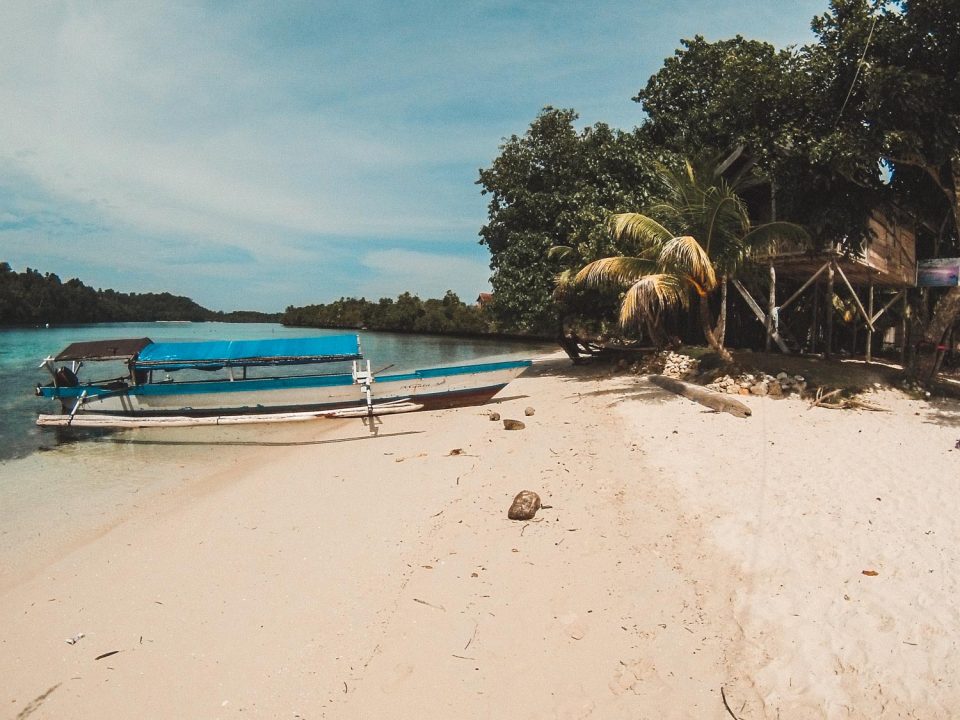
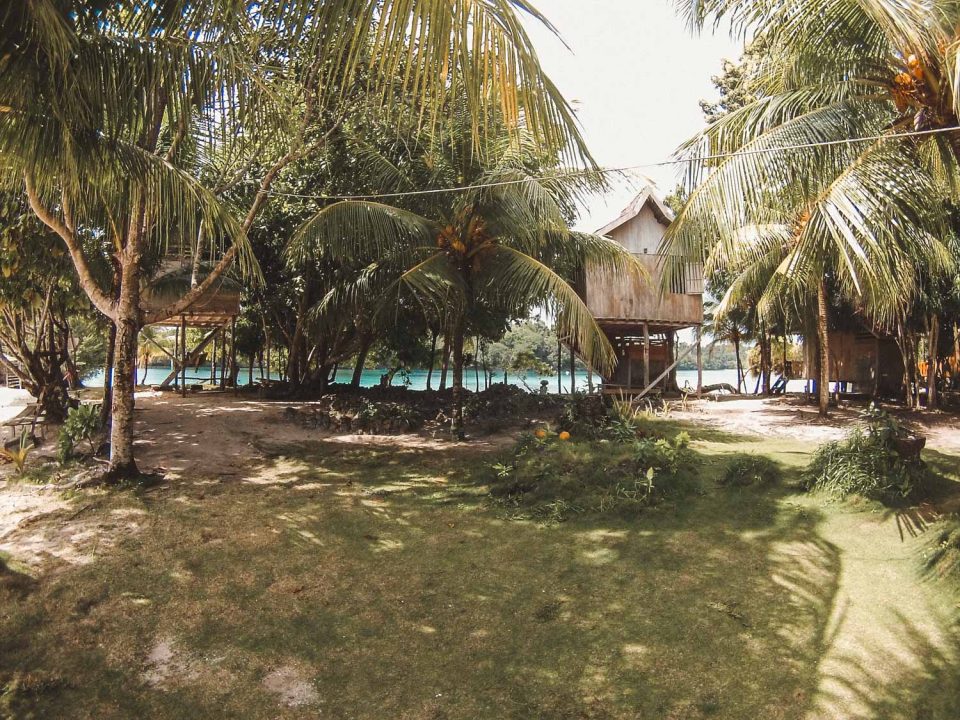
Malenge Indah
Durch unsere a-zyklische Reiseroute kamen wir in Malenge in dem Moment an, als alle anderen abreisten. Damit hatten wir das ganze Resort bis auf einen netten, älteren Franzosen, für uns alleine. Malenge Indah bewegt sich preislich in der ähnlichen ähnlichen Höhe, es gibt dafür sogar fließendes Wasser und westliche Toiletten. In die kleine Bucht kommt kaum ein Windzug, weshalb es sehr sehr schwül werden kann. Das ist aber halb so wild, kann man doch vom Strand aus wunderbar Schnorcheln gehen und sich abkühlen. Auch hier waren ein oder zwei Aktivitäten inkludiert.
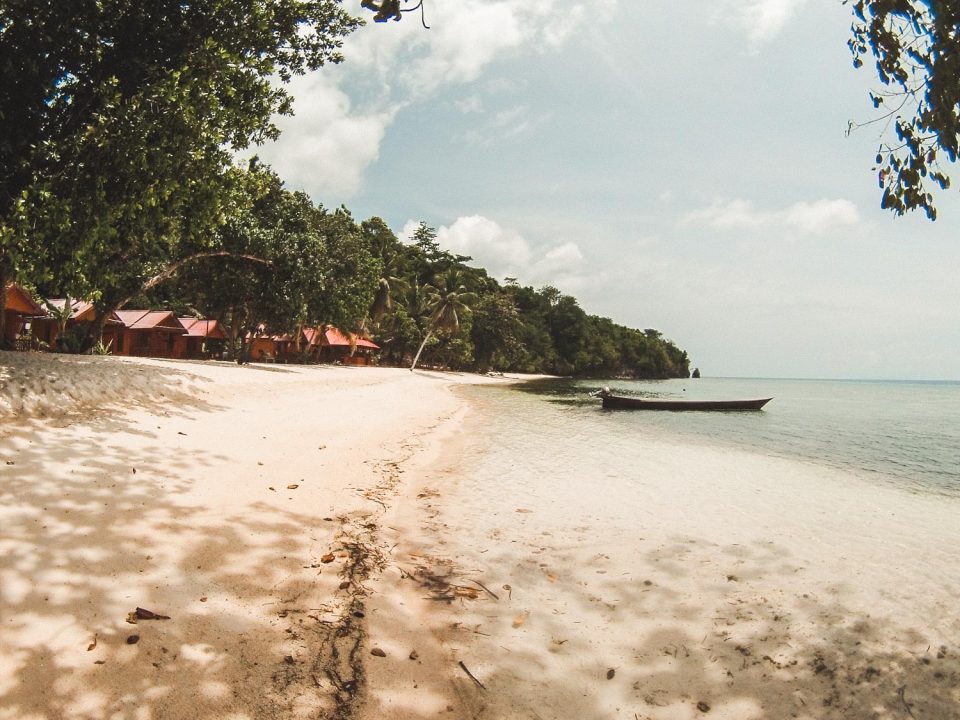
Aktivitäten auf den Togian Islands
Schnorcheln
Die Togians haben jede Menge zu bieten, an Land aber vor allem auch unter Wasser. Es gibt zahlreiche Atolle und Riffe, zu denen man Ausflüge machen kann. Wer nicht Tauchen kann – kein Problem! Fast jede Unterkunft besitzt Schnorchelausrüstung und bringt euch zu den schönsten Spots. Unser schönster Spot war das Bomba Atoll, aber eigentlich ist alles sehenswert. Das Wasser ist glasklar und dank Umweltschutz erstaunlich sauber. Wir haben sogar riesige Rochen in der Tiefe gesehen, wo bis heute die Meinungen auseinander gehen, ob es Mantas waren. Auf Poya Lisa und Malenge kann man außerdem direkt vom Strand aus ins Wasser. Im Mangrovenwald vor Poya Lisa gibt es Salzwasser-Krokodile, aber bisher scheint nie was passiert zu sein. Einheimische wie Touristen, inklusive uns, haben sich davon nicht abhalten lassen. Das Risiko muss natürlich jeder für sich selbst bewerten und ein mulmiges Gefühl war schon dabei.
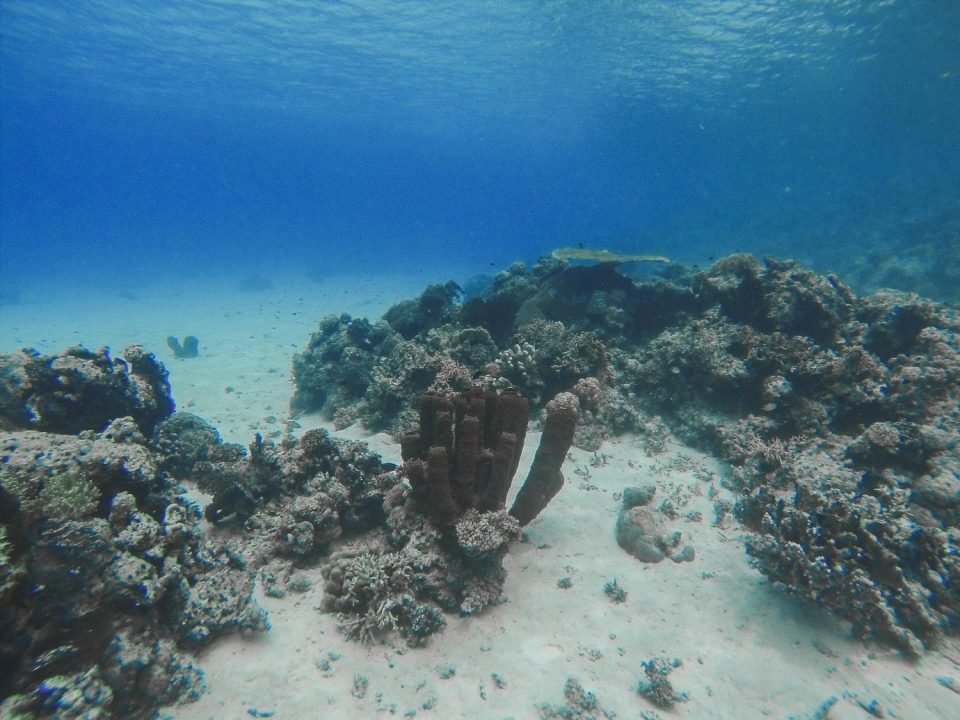
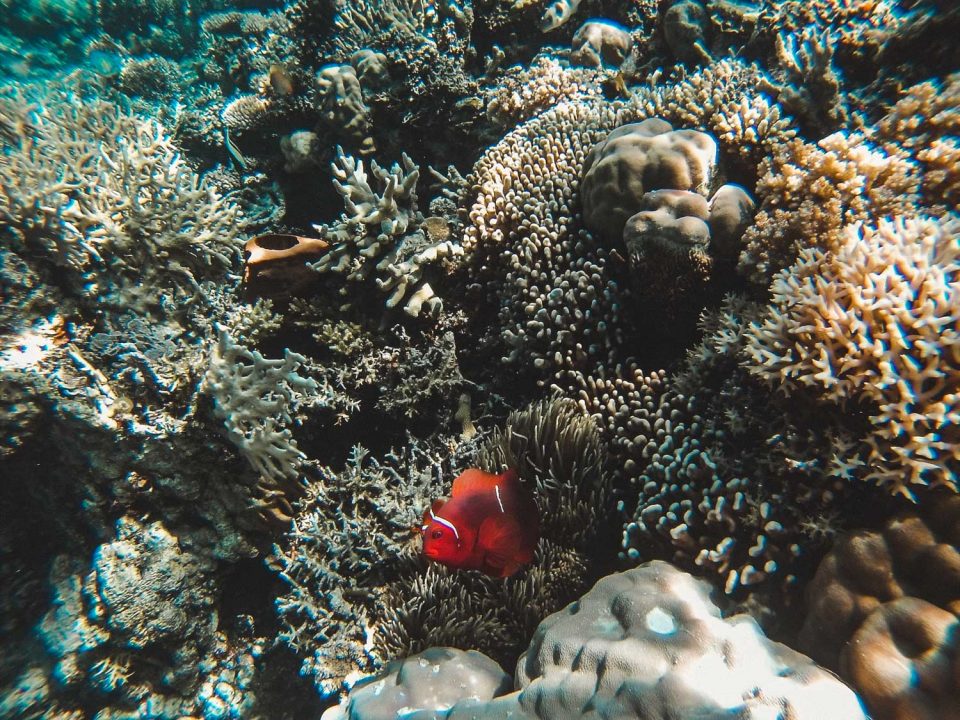
Tauchen
Für die Taucher gibt es abgesehen von den vielen Atollen und Riffen auch noch ein Flugzeugwrack aus dem zweiten Weltkrieg, welches vor dieser malerischen Kulisse versunken und heute ein beliebter Tauchspot ist. Übrigens: die Besatzung hat zum Glück überlebt. Ansonsten sind natürlich die gleichen Atolle und Riffe interessant. Um die 30 Tauch-Spots gibt es angeblich. Die Vorbereitung ist jedoch ein wenig komplizierter, da nur ein paar Resorts Tauchgänge anbieten. Hier sollte man sich vorher informieren und schauen, wo was möglich ist.
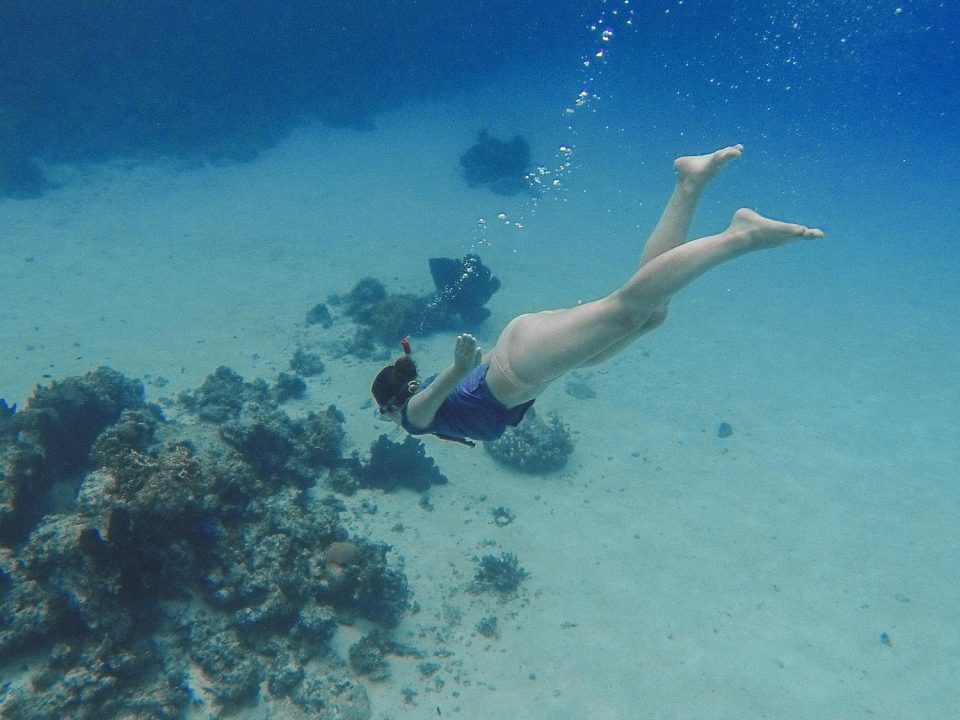
Der Quallensee
Zu meinem unendlichen Leidwesen leider ein Punkt, den ich nicht geschafft habe. Sollte ich jedoch wieder zu den Togians kommen, dann ist das erste, was ich besuche, wohl der Quallensee. Ja, richtig gehört. Ein See voller Quallen, die durch Jahre der Evolution auch nesselfrei wurden. Deswegen kann man heute einfach in dem See Schwimmen. Aber ohne Sonnencreme und Flossen bitte, um den Tieren nicht weh zu tun!
Ein Bajo-Dorf besuchen
Beispielsweise Malenge Indah organisiert Ausflüge zum nahegelegenen Bajo Village. Ein bisschen was wird erklärt, wer die Bajos allerdings besser verstehen will, sollte sich eigenständig einlesen. Das ist aber nicht so schlimm, die Eindrücke sind auch so vielfältig, wenn man durch das Dorf auf Pulau Papan stapft. Auch ein netter Spaziergang ist wahrscheinlich die mittlerweile fertiggestellte 1km lange Brücke, welche das Dorf mit der Insel Malenge verbindet, damit die Kinder auch die örtliche Schule besuchen können. Als ich zu Besuch war, war die Brücke gerade noch im Bau. Wahrscheinlich einer der schönsten Schulwege der Welt, zumindest bei schönem Wetter.
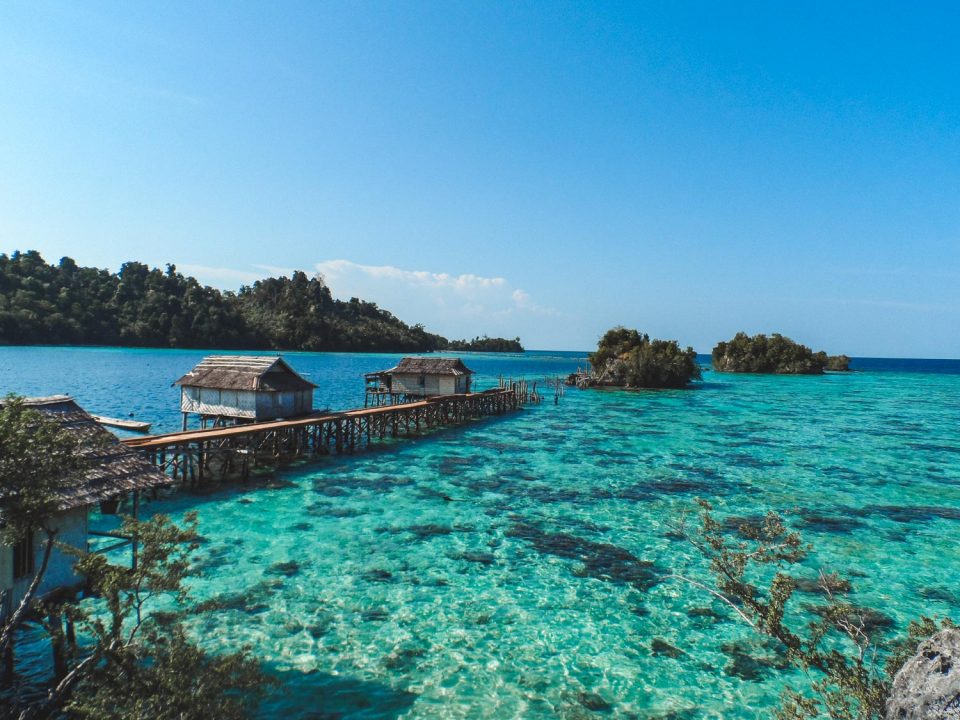
Entspannen
Strom nur für ein paar Stunden am Tag, kein Internet weit und breit und nur spärlichen Telefonempfang… hier ist man verdammt dazu im Hier und Jetzt zu leben und es ist ein wunderbares Gefühl. Nehmt euch Zeit für euch selbst, ein oder mehr gute Bücher zu lesen (Ich habe innerhalb eines faulen Tages auf Malenge das gesamte Buch „Der Hundertjährige, der aus dem Fenster stieg und verschwand“ verschlungen), ausgedehnte Mittagsschläfe zwischen Schnorcheln und anderen Ausflügen zu machen und mit euren Mitreisenden zu quatschen, Spiele zu spielen und die gemeinsame Zeit zu genießen.
Hier hat man den aufgezwungenen Luxus sich keine Gedanken machen zu müssen und zu können. Die Welt rundherum kann untergehen, aber es ist sehr unwahrscheinlich, dass du etwas davon mitbekommst. Genieß die Auszeit von den schlechten Nachrichten, den Sorgen und der Informationsflut. Denn alles was du auf den Togian Islands brauchst, bist du selbst, offene Augen und jede Menge Zeit.
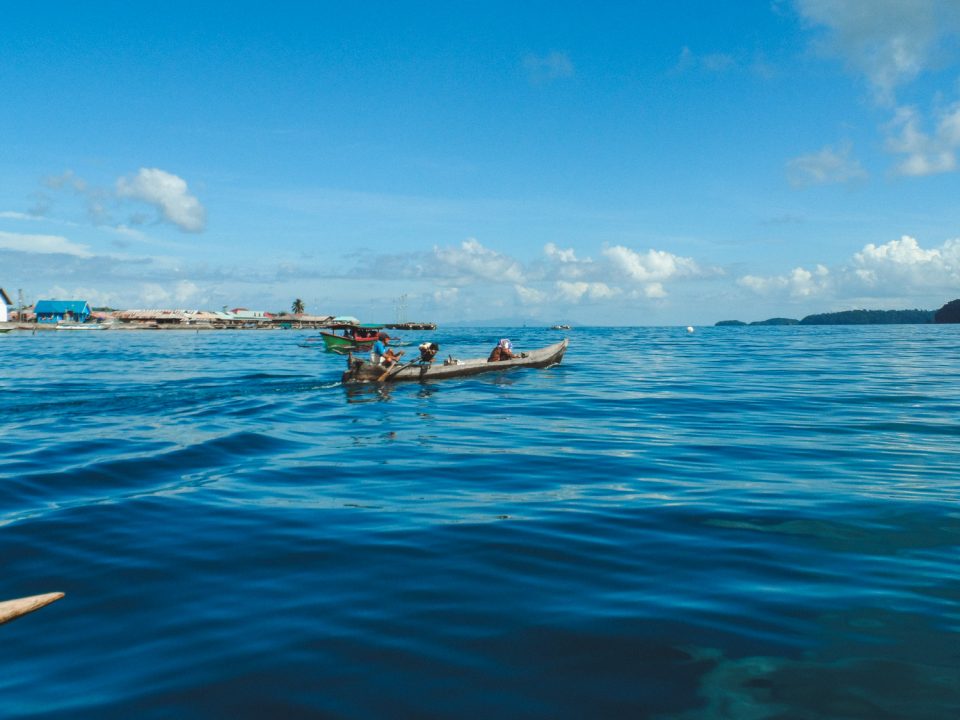
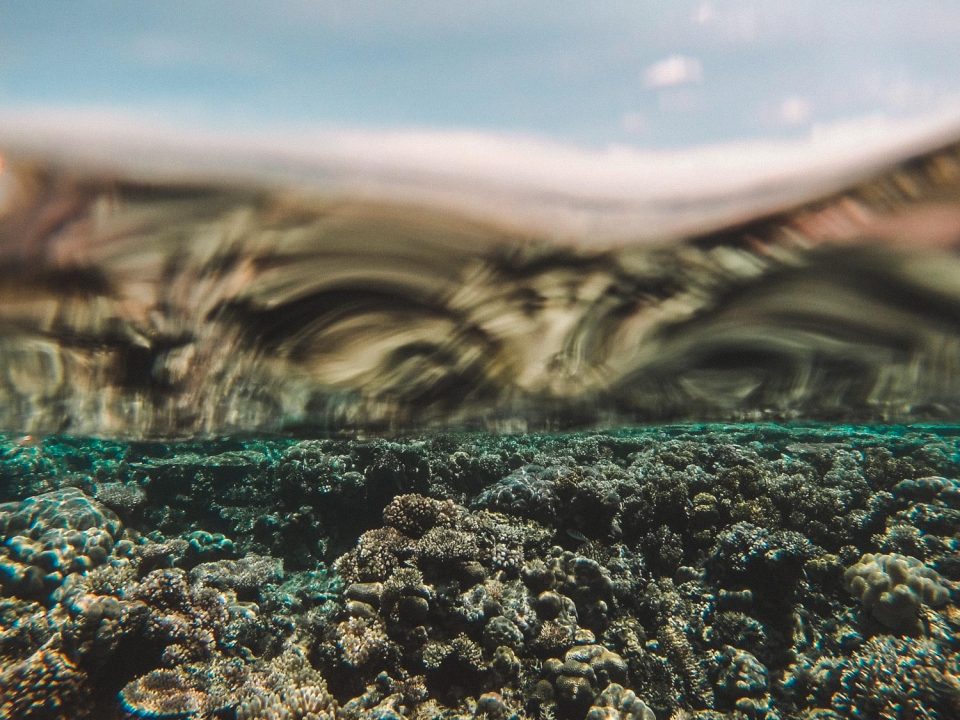
_______________________
English version
Travelogue & Guide: Togian Islands – The most beautiful spot on earth
Several years ago we visited the Togian Islands in Sulawesi, Indonesia. Several trips and impressive landscapes later, this archipelago is still the most beautiful spot in the world for me. Why did I wait so long with the article? I don’t know. Probably because the final blog post about a trip means its end. But at some point it’s just time. That’s why you’ll learn everything I know about the Togian Islands here.
What & Where: These are the Togian Islands.
Few people will have heard of Sulawesi (formerly Celebes). Even less of the Togian Islands. Sulawesi is located north of Bali and east of Borneo. Do you see this spot on the map that many compare to an orchid? This spot has a north-south extension of the size of Germany. And yet nobody knows it. This is Sulawesi.
In the upper part of the orchid, between the upper „arms“, there is not only the equator, but also the Togian Islands. 56 islands form the group, but not all are inhabited. And sometimes only the water is inhabited, but later more.
Since 2004, the Togians and their underwater world are under protection. Before that, it used to be fished with dynamite, which has destroyed many coral, but is slowly recovering. This rethink is untypical for Indonesia and make the Togian Islands even more attractive. Allegedly it was a German emigrant who dedicated herself to nature conservation and educated the population. Whomever this step is due, the unique nature can take a breather and the locals benefit from the enthusiastic tourists. Fortunately, they are still limited, because the journey is not a walk.
Directions: How to reach the nature reserve
Apparently, since 2018 there is an entrance fee for entering the nature reserve of about 10 € for adults and a little less for students and locals. (Source: Indojunkie). Take with you a bit of cash, because to my knowledge, there is no ATM on the islands. A sufficient supply is therefore a must.
You can reach the Togian Islands either from the north from Gorontalo or from the south of Ampana. From the south, the crossing takes only a few hours (3-4 hours, if I remember correctly), but you have a much longer land route before you. Apparently there is now also an airport in Ampana.
Our way
We arrived from Gorontalo. From Manado we took a private car to Gorontalo, spent a night in this city and then boarded the ferry towards Togians. Inquire early when ferries leave, the connection is not served every day (to my knowledge). The ferry from the north is much larger than the one from Ampana, because you drive all night. So you can decide for different classes. We had comfortable chairs below deck (2nd class), which could be set far back.
But actually it would have made the cheapest class, because it was not long before we met other travelers and opened a large dormitory on deck. If the weather plays and you do not get seasick, then I can really recommend everyone to sleep on the deck. The starry sky on the open sea is breathtaking and I have never seen such a magical sky again. Not even in Wae Rebo. It was so nice that I did not want to sleep, but the fatigue eventually won. The smell of gasoline, which now and then blows over the deck, does not bother much either. We were awakened by the first rays of the sun and accompanied by dolphins. Can someone pinch me?
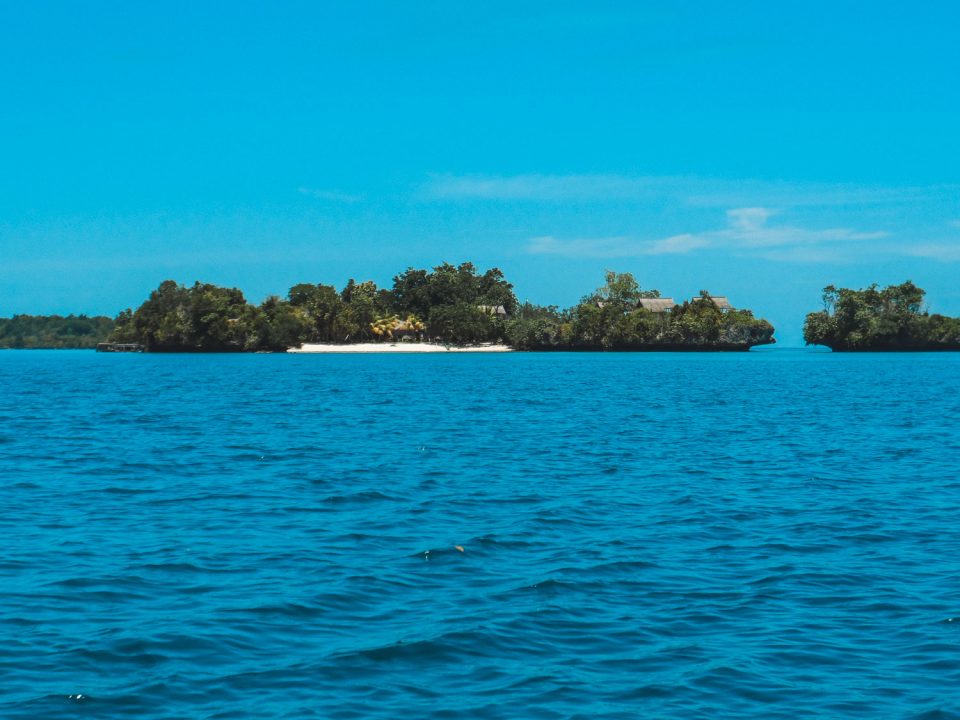
Traveling between the islands
The ferries are both landing in the capital Wakai. Anyone who now imagines a real city is completely wrong. It is rather a village with shallow huts in front of which cloves are dried. There are hardly any cars and motorbikes in the whole island, if there are a few then here.
For onward travel you have to go with the locals. But that’s not a problem, the boat owners are already waiting for the arrivals at the pier. You may also be able to team up with other travelers on the ferry to save the cost of the boat trip. We opted for an A-cyclic route (which, frankly, was not the smartest) and therefore chartered a boat for us alone. If you have found someone, then it is time to negotiate vigorously. The price varies by distance and how much rush there is. Where the right price is, is a matter of feeling.
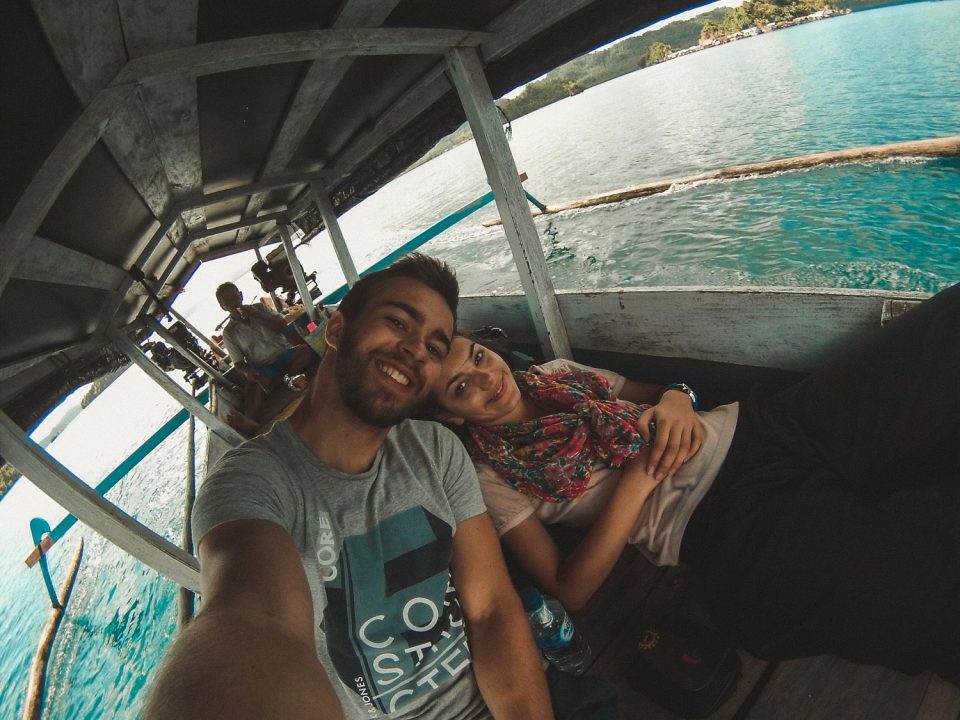
The life of the Togians
The people of the Togian Islands are very friendly and accommodating, as in whole Sulawesi. Most of them are Muslim and it may happen that the muezzin wakes you up. This is annoying at the beginning, but then you can luckily turn around again. Or watch the sunrise.
There is also the sea nomads people of the Bajos. This people probably lives on the Togians for much longer and is currently in an intermediate state of sea nomads to sedentary inhabitants. Because actually the Bajos believe that on land only the dead live and go therefore only to the fear, wood fell and for funerals ashore. The rest of life takes place in stilt cabins and on boats. At least that’s it. Although you can see the typical stilt houses everywhere, but the villages extend even further on the mainland. Where usually a mosque is. Here, ancient belief mingles with other religions.
Lodgings & Prices
Luxury hostels are hard to find here, which is partly because most of the islands have no electricity, internet or mobile phone reception. And that’s great! Nowhere else can you switch off so incredibly well and live the day purely. But more on that later.
Most accommodations are accordingly in the lower to middle category and are equipped with the essentials. The prices usually include 3 meals a day. Since there are no supermarkets, the food is caught fresh during the day. Eaten then together and usually at the same time. I did not experience a la card at any accommodation. It also brings you together with the rest of the population and makes you feel like you’re in a big family.
Poya Lisa
Poya Lisa is a very tiny island across from Bomba and for me the most beautiful place. The owner of the island bought it from a Bajo, as a young man he always went by boat to the island and ate the coconuts. He wanted to give the owner something and finally found the sea nomads. For him the ground of the island was insignificant, only the 5 coconut palms had a value for him. And so it happened that the owner bought the 5 palm trees for the equivalent of 50 € (which of course was a long time ago, but much more expensive it was not) the Bajo and thus became owner of the island, today on the wooden huts nestle on the rock. To this day you can see the tombstones of the Bajos in the middle of the island. Somehow a little scary.
Why do I know that? When we arrived, unfortunately, all the huts were occupied and so we spent a night in the house of the owner in Bomba, where he told us the story. „Many large companies have already asked,“ he told us with a laugh, „but I do not sell. It will always be my island! „Let’s hope that
On Poya Lisa you can also choose between different room categories. We had decided on the „most expensive“ (about 12 € p.P.), which meant a bungalow with its own „bathroom“ (toilet and Mandi) on the ledge and 3 meals and a snack a day. In addition, you could also make 2 trips for free. So we came straight to our snorkeling spots.
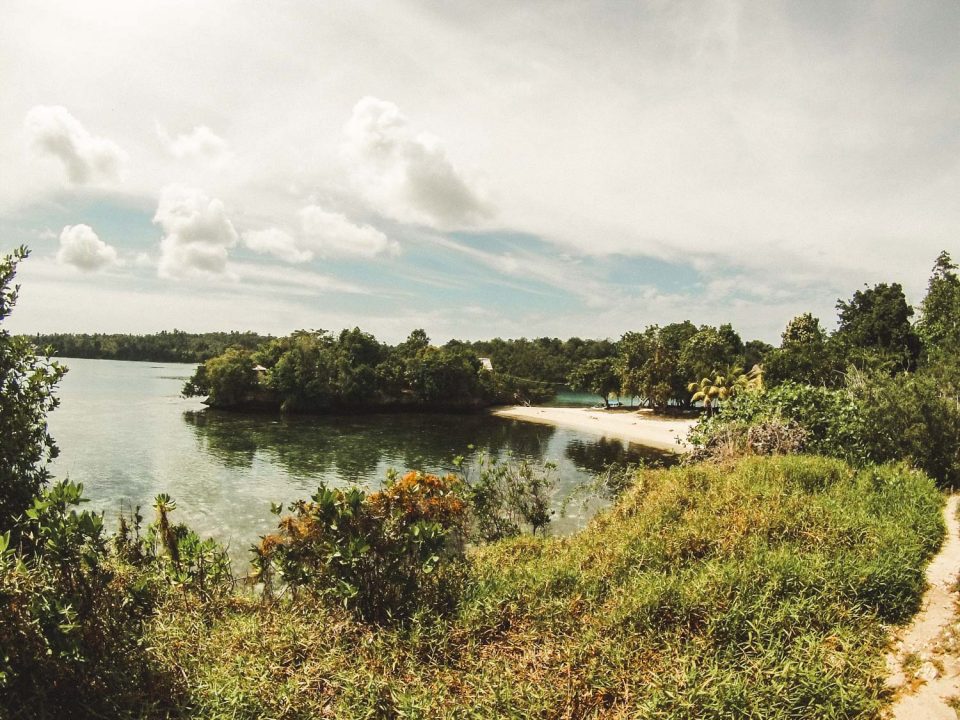
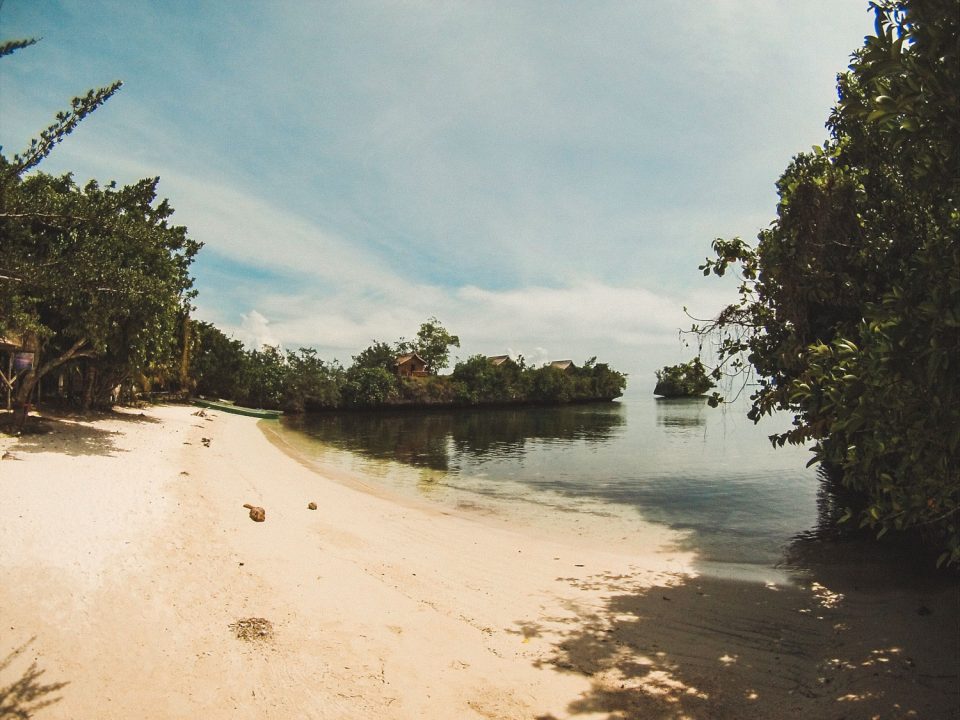
Malenge Indah
At our a-cyclical itinerary, we arrived in Malenge the moment everyone left. So we had the whole resort except for a nice, older Frenchman, for us alone. Malenge Indah is priced at a similar similar altitude, there are even running water and western toilets for it. In the small bay is hardly a wind, so it can be very very humid. But that is not so bad, you can go from the beach wonderful snorkeling and cool off. Again, one or two activities were included.
Activities in the Togian Islands
Snorkels
The Togians have a lot to offer, but on land, especially under water. There are numerous atolls and reefs, to which you can make trips. Who can not dive – no problem! Almost every accommodation has snorkeling equipment and brings you to the best spots. Our most beautiful spot was the Bomba Atoll, but actually everything is worth seeing. The water is crystal clear and thanks to environmental protection amazingly clean. We even saw huge rays in the depths, where even today opinions differ, whether they were mantas.
On Poya Lisa and Malenge you can also go directly from the beach into the water. In the mangrove forest in front of Poya Lisa there are saltwater crocodiles, but so far nothing seems to have happened. Locals and tourists, including us, have not let that stop them. Of course everyone has to assess the risk for themselves and a queasy feeling was already there.
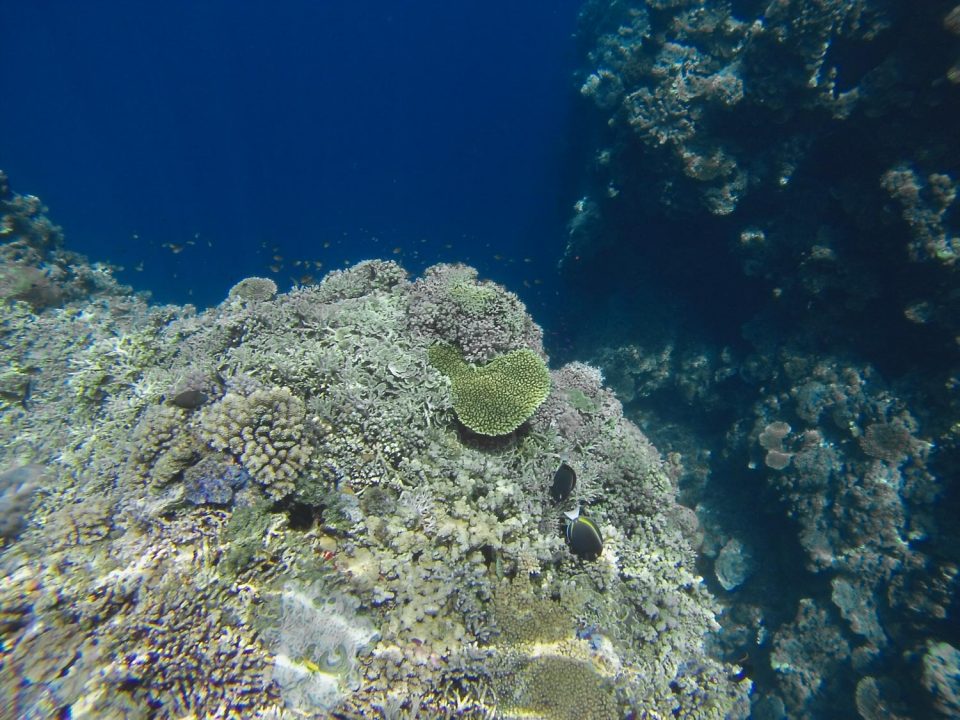
Diving
For the divers there are apart from the many atolls and reefs also a plane wreck from the Second World War, which sunk in front of this picturesque backdrop and is now a popular diving spot. By the way: the crew has fortunately survived. Otherwise, of course, the same atolls and reefs are interesting. There are supposed to be around 30 diving spots. However, the preparation is a bit more complicated as only a few resorts offer dives. Here you should inform yourself in advance and see what is possible.
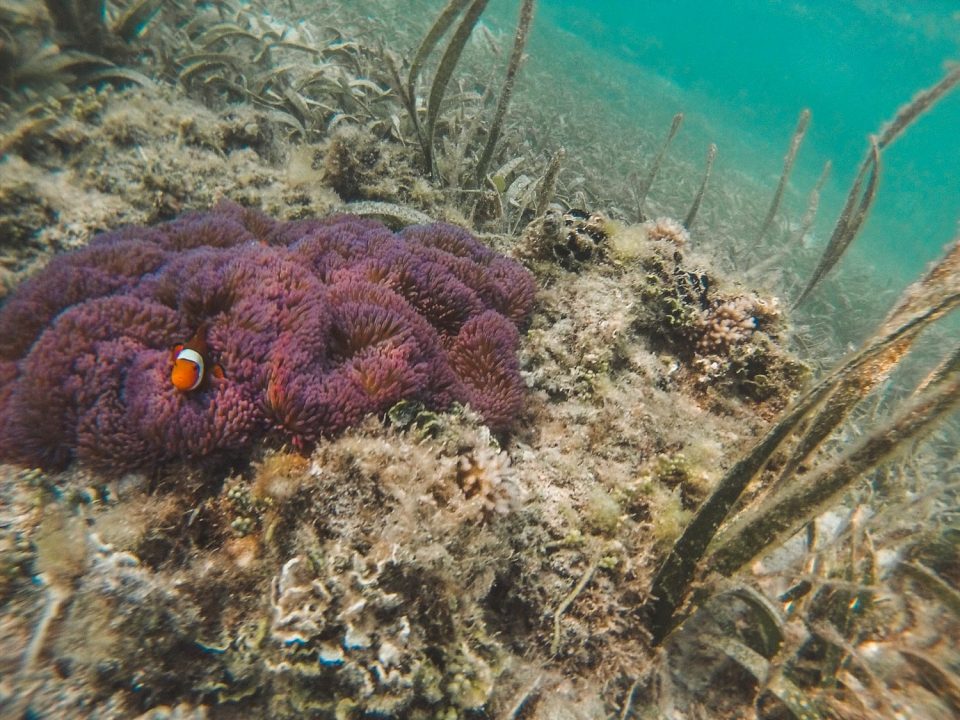
The jellyfish lake
To my infinite grief unfortunately a point that I did not make. But if I come back to the Togians, then the first thing I visit is the jellyfish lake. Yes, heard that right. A lake full of jellyfish, which through years of evolution also became nettle free. That’s why today you can just swim in the lake. But without sunscreen and fins, so as not to hurt the animals!
Visit a Bajo village
For example, Indah organizes trips to the nearby Bajo Village. A bit of what is being explained, but who wants to understand the Bajos better, should read in on their own. But that’s not so bad, the impressions are so diverse when you trudge through the village on Pulau Papan. Also a nice walk is probably the now completed 1km long bridge, which connects the village with the island of Malenge, so that the children can also visit the local school. When I visited, the bridge was just under construction. Probably one of the most beautiful school routes in the world, at least in good weather.
Relaxing
Electricity only for a few hours a day, no internet around and only sparse telephone reception … here you are damned to live in the here and now and it is a wonderful feeling. Take time for yourself to read one or more good books (during a lazy day on Malenge I devoured the entire book, „The Centenarian Who Got Out of the Window and Vanished“), making extensive nooses between snorkeling and other outings and to chat with your fellow travelers, to play games and to enjoy the time together. Here you have the luxury of not having to worry. The world around can go down, but it is very unlikely that you will notice it. Enjoy the break from the bad news, the worries and the flood of information. Because all you need in the Togian Islands is yourself, open eyes and plenty of time.
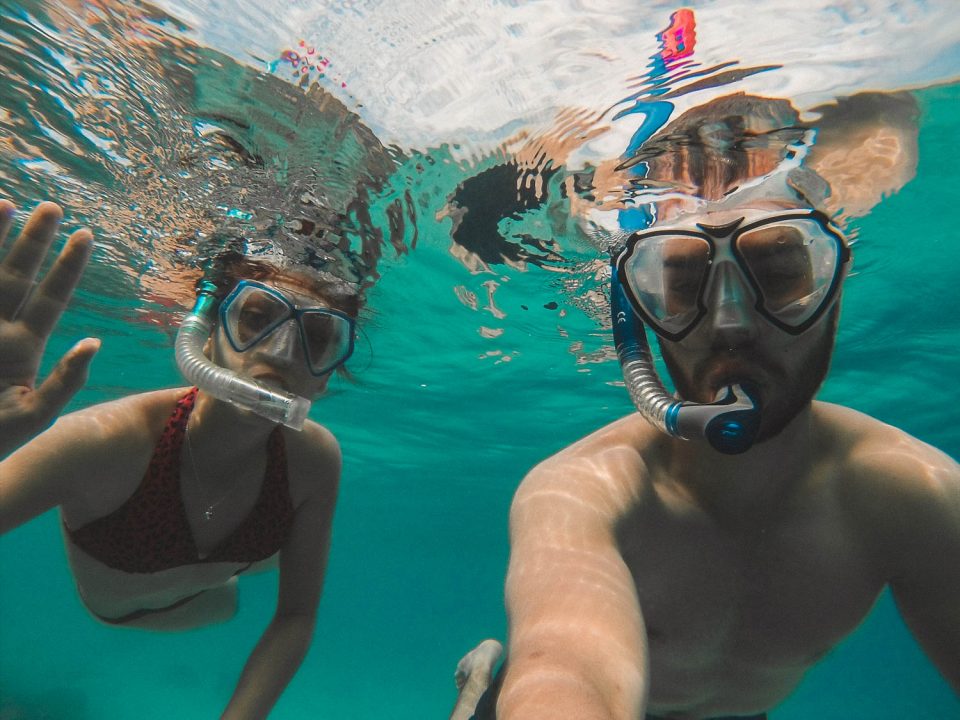


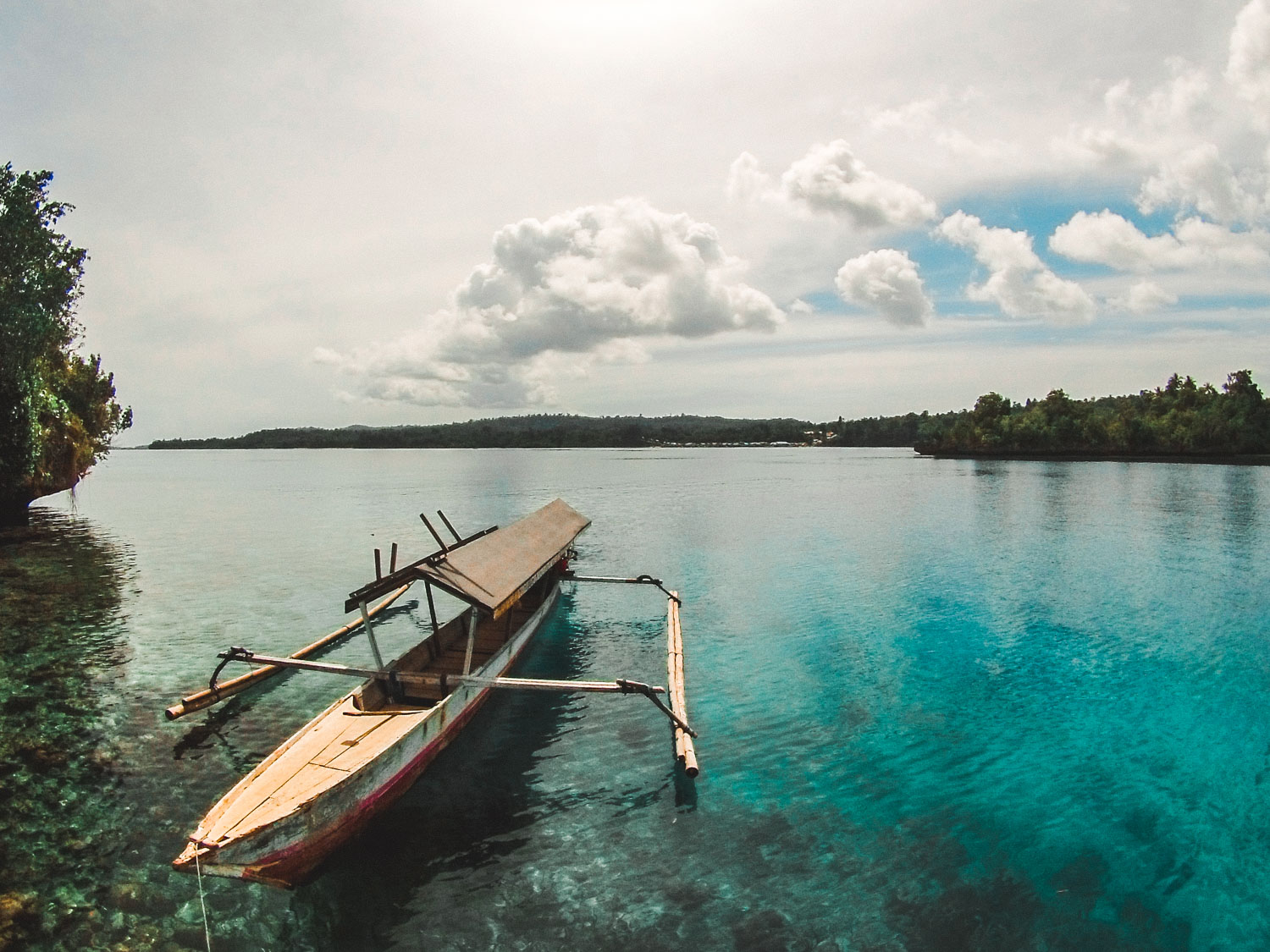

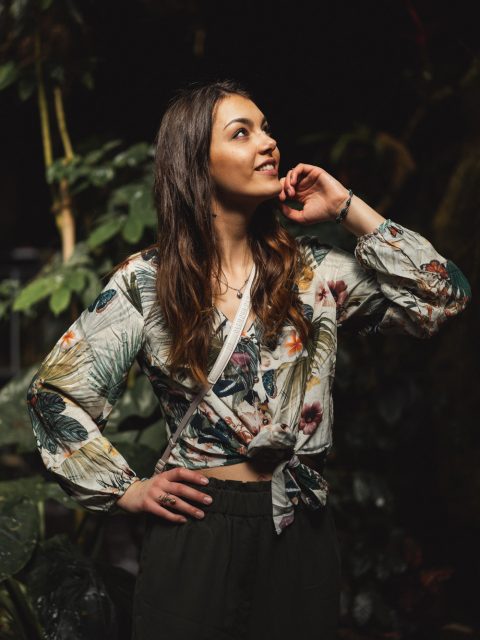
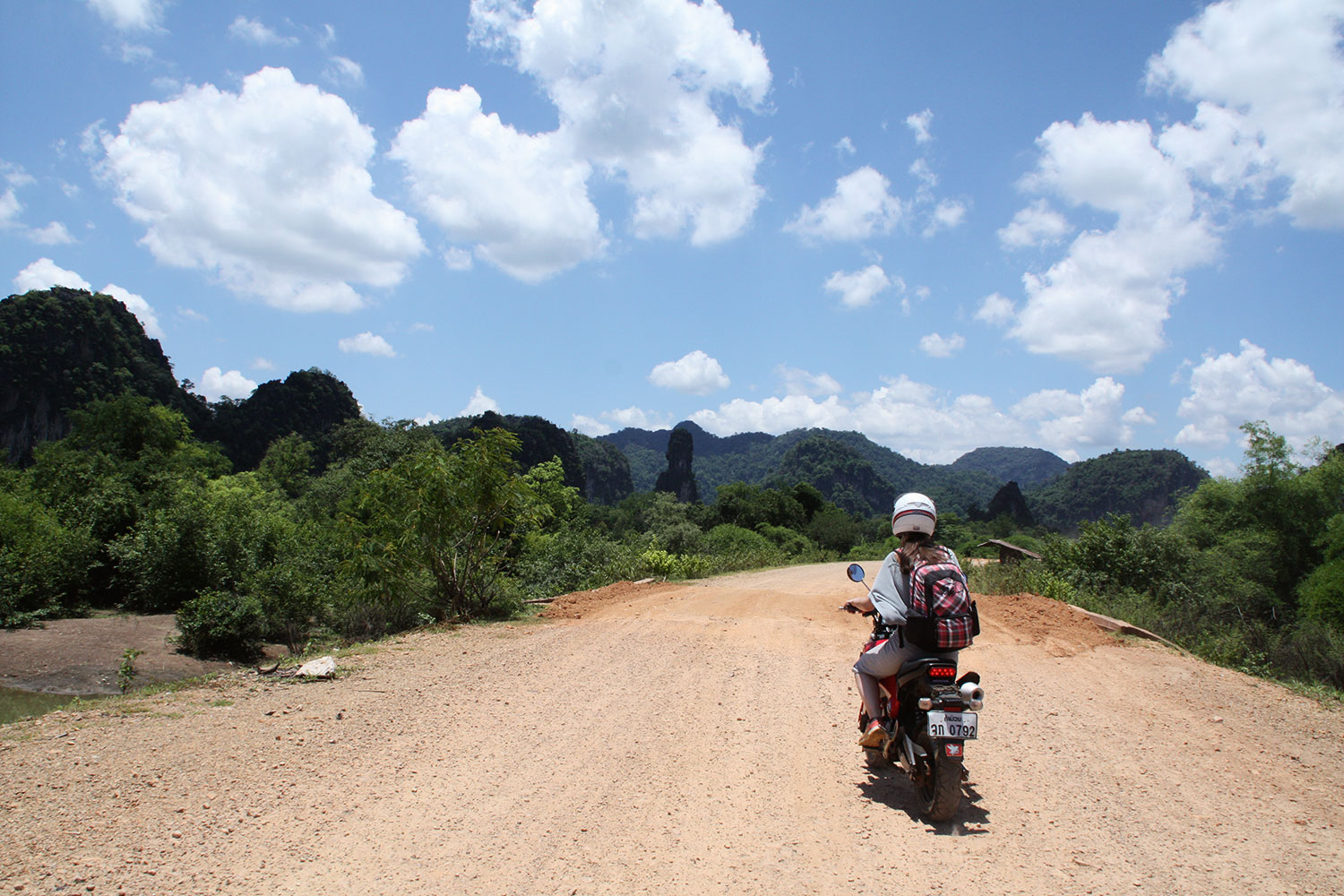

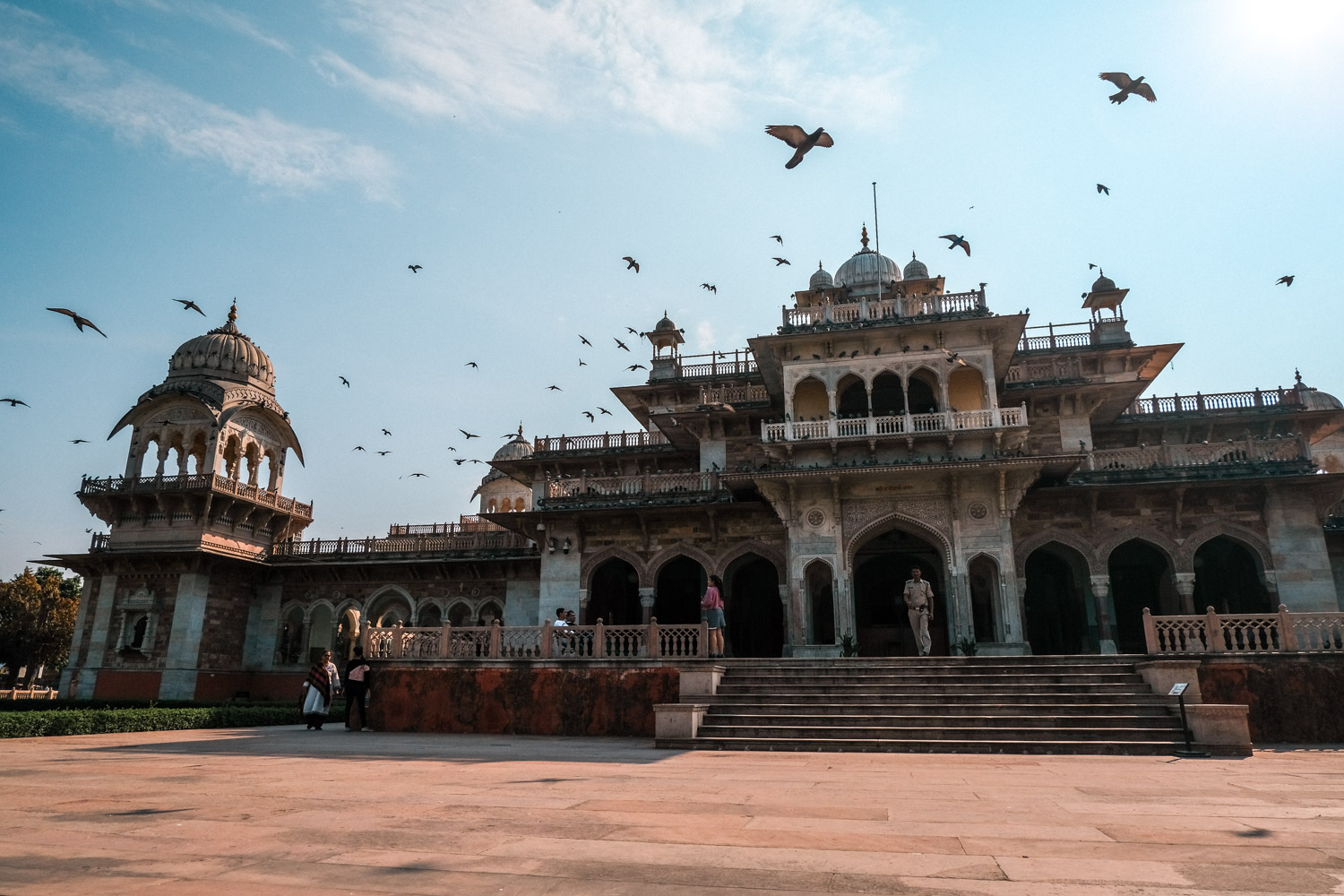
12 Comments
Sulawesi in Indonesia: The Full Travel Guide | The Dorie Blog
6 Jahren ago[…] Für mich der schönste Fleck der Welt. Die Inselgruppe ist nicht so leicht zu erreichen, bietet dafür aber eine atemberaubende Natur. Das ganze Gebiet steht unter Naturschutz und wer gerne schnorchelt oder taucht ist hier richtig gut aufgehoben. Einen ausführlichen Bericht über die Togian Islands findet ihr hier: Travelguide Togian Islands. […]
Iris Vorberg
6 Jahren agoIch war dort vor 20 Jahren mit meiner besten Freundin auf unserer halbjährigen backpacking-Tour. Ich unterschreibe jedes deiner Worte! Es war das beste Reisehighlight. Und ich freue mich so sehr, dass es anscheinend bewahrt worden ist❤️
Viele Grüße aus Hamburg von Iris
Dorie
6 Jahren agoOh das ist so schön zu hören! Ein Freund von mir ist jetzt gerade dort und es hat sich immer noch nicht viel geändert. Das ist so selten und so schön <3
Liebe Grüße
Oli
6 Jahren agoIch war vor einigen Jahren ebenfalls auf den Togian Islands, habe allerdings Kadidiri besucht. Für mich war das auch eines meiner schönsten Inselziele bisher. Bin mal gespannt, wie sich das entwickelt. Mit einem Flug nach Ampana und einem Eintrittspreis sind aber vermutlich schon die Weichen gestellt, dass das Inselpadies micht mehr lange eins bleibt.
Erica
7 Jahren agoWhat an adventure! Looks like a lot of fun – definitely adding to my must-visit list of places 🙂
Erica
http://www.eggcanvas.com
Dorie
7 Jahren agoIt really was. You should definitely visit. Such a dreamy place 🙂
Jimena
7 Jahren agoWow, so viele schöne Bilder und Eindrücke, das sieht ja nach einem ganz tollen Trip aus!
Liebe Grüße
Jimena von littlethingcalledlove.de
Dorie
7 Jahren agoWar es auch wirklich 🙂 Vielen lieben Dank! Schönes Wochenende 🙂
Reni E.
7 Jahren agoHallo liebe Dorie,
das muss wirklich ein wunderschöner Urlaub gewesen sein. Die Bilder sind es jedenfalls traumhaft schön, und dein Bericht hört sich richtig spannend an.
Liebe Grüße
Reni
Dorie
7 Jahren agoJa, es war der wohl spannendste Urlaub, den ich je hatte. So eine tolle Insel! Ich komm gleich wieder ins Schwärmen 😀
Liebe Grüße!
anh
7 Jahren agodie bilder sind alle so so schön!
vielleicht hättest du den hotspot doch lieber geheim halten sollen =P
Dorie
7 Jahren agoHaha, ja vielleicht echt. 😀 Vielen Dank :*